In today’s fast-paced digital marketplace, managing your inventory effectively can make or break your ecommerce business. With teh right inventory management software, you can streamline operations, minimize costs, and keep your customers happy by ensuring that popular products are always in stock. But with so many options out there,how do you choose the best solution for your unique needs? Fear not! We’ve done the heavy lifting for you and compiled a list of the top ecommerce inventory management software solutions that not only simplify your life but also help your business thrive. Whether you’re a budding entrepreneur or a seasoned retailer, these tools are designed to enhance efficiency and boost profitability.So let’s dive in and discover the best inventory management software that can take your ecommerce game to the next level!
Understanding the Importance of Inventory Management in Ecommerce
In the fast-paced world of ecommerce, effective inventory management is the backbone of a successful business.It ensures that you have the right products available at the right time, which is crucial for customer satisfaction and retention. When customers find what they want, when they want it, they are more likely to return to your store. Conversely,poor inventory management can lead to stockouts,overstock situations,and ultimately,lost sales.
One of the key benefits of robust inventory management is enhanced operational efficiency. by keeping track of your inventory in real-time, you can streamline your supply chain processes. This proactive approach means that when a product is selling fast, you can reorder before it runs out, effectively preventing the dreaded ‘out of stock’ status. Moreover, with better visibility, you can identify slow-moving items and adjust your purchasing strategy accordingly.
Additionally, good inventory management helps in reducing costs. Carrying excess inventory ties up your capital and increases storage costs. By analyzing your sales trends and customer demand, you can better predict inventory needs and make smarter purchasing decisions. Implementing software solutions can automate these tasks, enabling you to maintain optimal stock levels without the manual headache.
The right inventory management software offers:
- Real-time tracking of stock levels
- Integration with ecommerce platforms
- Forecasting tools to anticipate demand
- Automated reorder notifications
- Reporting features for data-driven decisions
When selecting the best ecommerce inventory management software, consider the following criteria:
| Feature | Importance |
|---|---|
| Multi-channel support | Helps manage inventory across various sales channels. |
| User-kind interface | Ensures ease of use for you and your team. |
| Scalability | Grows with your business needs. |
| Customer support | provides assistance when challenges arise. |
Ultimately,investing in the right inventory management software not only boosts your bottom line but also enhances your overall customer experience. Customers appreciate efficiency and reliability, and when they receive their orders on time with the right products, they are likely to become loyal advocates for your brand. Thus, prioritizing inventory management is not just about keeping shelves stocked; it’s about fostering lasting relationships with your customers and ensuring lasting growth for your ecommerce business.
Key Features to Look for in Ecommerce Inventory Management software
When selecting ecommerce inventory management software, it’s crucial to identify features that can enhance your business operations and streamline processes. Here are some key functionalities that can make a meaningful difference:
- Real-Time inventory Tracking: Ensure the software provides real-time updates on stock levels. This feature helps prevent overselling and stockouts while allowing you to manage your inventory effectively.
- Multi-Channel Integration: Look for solutions that integrate seamlessly with various sales channels, such as Amazon, eBay, and your own ecommerce site. this ensures all sales data is centralized and manageable.
- Automated Reordering: Software that automates the reordering process based on predefined stock levels can save you time and help maintain optimal inventory levels without manual input.
Additionally,consider software that includes reporting and analytics tools. These can provide insights into sales trends, inventory turnover rates, and product performance, helping you make data-driven decisions. The ability to generate customizable reports can also be invaluable for strategic planning.
| Feature | Benefit |
|---|---|
| Mobile access | Manage inventory on the go for better flexibility. |
| barcode Scanning | Speed up stocktaking and reduce human error. |
| Supplier management | Streamline interaction and order management. |
Another essential aspect is customer support. Opt for a provider that offers reliable customer service options, including live chat, phone support, and a comprehensive knowledge base. This can be invaluable, especially during implementation and troubleshooting phases.
Lastly, scalability should not be overlooked. As your business grows, your inventory management needs will evolve. Choose a software solution that can scale with you, accommodating increased stock levels and additional sales channels without a hitch.
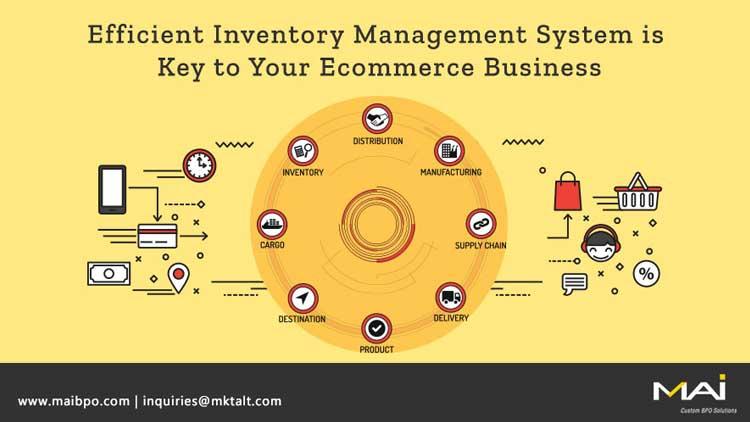
Top Ecommerce Inventory management Solutions Worth Considering
When it comes to managing your online store’s inventory, having the right tools can make all the difference. Whether you’re a small business or a larger enterprise, there are several standout options available that can streamline your processes and enhance your efficiency.
Shopify stands out as a leading ecommerce platform with its built-in inventory management system. It provides seamless integration for tracking stock levels, processing orders, and managing suppliers.The user-friendly interface allows for easy navigation, making it simple for anyone to keep their inventory in check.
TradeGecko (now quickbooks Commerce) offers a robust set of features tailored for growing businesses. It excels in automating inventory management tasks, providing real-time stock updates and analytics. This tool is particularly favored for its capability to handle multiple sales channels, ensuring that you never oversell your products.
Square for retail is another excellent solution that combines point of sale and inventory management into one cohesive package. With features like barcode scanning and employee management, it’s perfect for retailers who want to simplify their operations while keeping everything organized. The mobile app allows for on-the-go inventory tracking, which is a game changer for busy entrepreneurs.
Zoho Inventory is a fantastic option for businesses looking for budget-friendly software without compromising on features. It offers multi-channel selling, inventory tracking, and order management capabilities.The integration with various platforms like Amazon and eBay makes it easier to centralize your inventory management.
For those who require advanced analytics, consider NetSuite. This cloud-based solution is ideal for larger enterprises that need comprehensive financial and inventory data. Its powerful reporting tools allow businesses to make informed decisions based on real-time insights.
| Software | Key Features | Best For |
|---|---|---|
| Shopify | Built-in inventory tracking, multi-channel selling | Small to medium businesses |
| TradeGecko | Automated tasks, real-time updates | Growing enterprises |
| Square for Retail | POS integration, barcode scanning | Retailers |
| Zoho Inventory | Budget-friendly, multi-channel support | Small businesses |
| NetSuite | Advanced analytics, cloud-based | Large enterprises |
By evaluating these inventory management solutions, you can find a platform that not only fits your business needs but also supports your growth ambitions. Remember, the right software can save you time, reduce errors, and ultimately boost your bottom line.
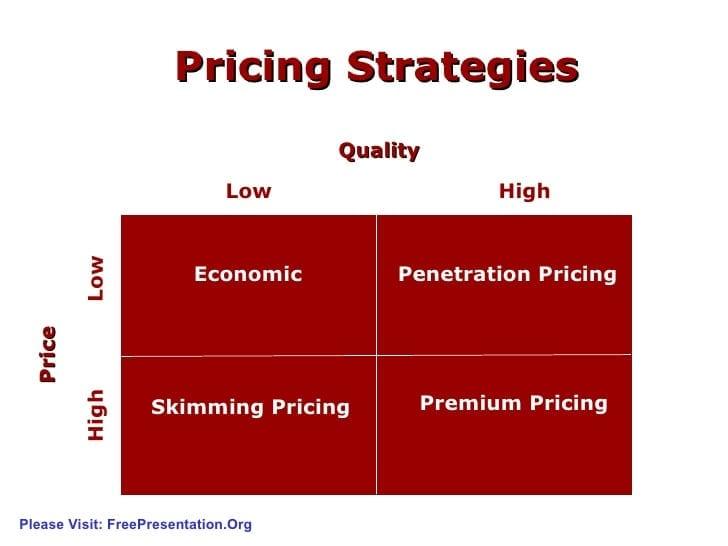
Comparing Pricing Models: Finding the best Fit for Your Budget
When it comes to selecting the right ecommerce inventory management software,understanding the various pricing models is crucial to ensure that you find a solution that aligns with your financial goals. The market offers several pricing structures, each with its own advantages and potential drawbacks, making it essential to weigh your options carefully.
Here are some common pricing models you might encounter:
- Subscription-Based Pricing: This model charges users a recurring fee, frequently enough monthly or annually.It’s popular for its predictability and ability to keep software up to date without additional costs.
- One-Time Fee: Some platforms offer a one-time purchase option, which may seem appealing. However, consider the ongoing costs of updates, maintenance, and support, which are often not included.
- Pay-As-You-Go: Ideal for small businesses or those with fluctuating inventory needs, this model allows you to pay only for what you use, keeping expenses in check during leaner months.
- Tiered Pricing: Many ecommerce solutions provide different service tiers based on the size of your business or the features you require. This flexibility lets you scale your investment as your business grows.
To help you further, here’s a quick comparison of popular ecommerce inventory management software and their pricing models:
| Software | Pricing Model | Starting price |
|---|---|---|
| Shopify | Subscription-Based | $29/month |
| TradeGecko | Tiered Pricing | $39/month |
| Zoho Inventory | Subscription-based | $0-299/month |
| square for Retail | Pay-As-You-go | $60/month |
Choosing the right pricing model isn’t just about the upfront costs. Consider how each option aligns with your business’s growth trajectory. For instance, if you expect rapid expansion, a subscription-based model may provide the flexibility needed to scale your operations without facing hefty upfront fees. Conversely, if your business is more stable, a one-time fee or pay-as-you-go option might offer better long-term value.
Additionally, don’t overlook the importance of hidden costs associated with each model. Ensure you evaluate:
- Transaction Fees: Some platforms charge fees on sales made thru their software.
- Feature Availability: Higher-tier plans frequently enough unlock advanced features that might potentially be essential for your business.
- Support and Training: Ensure you understand what level of customer service and training is included in the price.
the best pricing model is one that not only fits your budget but also supports your operational needs and future growth. By comparing different solutions and their pricing structures,you can make an informed decision that positions your ecommerce business for success.
Integrating Inventory Management Software with Your Ecommerce platform
is crucial for streamlining operations and enhancing customer satisfaction. When you have real-time visibility of your stock levels, you can make informed decisions that boost efficiency and reduce costs. Here are some key benefits of integrating these systems:
- Real-Time Data Synchronization: Keeping your inventory data current across all channels ensures you won’t oversell or run out of stock unexpectedly.
- Improved Order Fulfillment: With accurate inventory counts, your team can process orders more quickly, leading to happier customers and repeat business.
- Enhanced Reporting: Integrated systems allow for comprehensive reporting, giving you insights into sales trends, seasonal demand, and stock turnover.
Choosing the right software is a key factor in maximizing these benefits. Look for solutions that offer robust API support, allowing seamless integration with popular eCommerce platforms like woocommerce, Shopify, and Magento. A few top contenders in the market include:
| Software | Key features | Integration Ease |
|---|---|---|
| TradeGecko | Multi-channel selling, order management | Very Easy |
| Zoho Inventory | Automated workflows, stock alerts | Easy |
| NetSuite | Comprehensive ERP, demand planning | Moderate |
Once you’ve selected your inventory management software, the implementation process is critical. Start by mapping out your existing workflow and identifying pain points in your current system. Establish a clear integration roadmap that outlines:
- Data Migration: Ensure that ancient inventory data is transferred accurately to avoid discrepancies.
- Testing: Conduct thorough testing to identify any issues before going live.
- Training: Provide comprehensive training for your team to maximize the software’s potential.
Lastly, ongoing maintenance and optimization are essential. Regularly review your software’s performance and remain open to updates and new features that could enhance your operations further.By embracing inventory management software integration, you position your eCommerce business for growth, efficiency, and customer loyalty.

How Automation Can Simplify Your Inventory Management Process
In today’s fast-paced eCommerce surroundings, managing inventory can be a daunting task. However, leveraging automation can revolutionize the way you handle your stock, making the process not only more efficient but also more accurate. Here are some ways automation can streamline your inventory management:
- Real-Time Tracking: Automated systems allow for real-time inventory tracking, enabling you to have an accurate view of stock levels at any given moment. This means you can promptly respond to changes in demand without the hassle of manual updates.
- Automated Reordering: With smart inventory management software, you can set reorder points. Once your stock falls below a certain level, the system can automatically place orders with your suppliers, preventing stockouts and missed sales.
- Data-Driven Insights: Automation tools analyze sales trends and inventory performance, giving you valuable insights that help optimize your stock. You can make informed decisions based on these analytics, ensuring your inventory aligns with customer demand.
- Reduced Human Error: Manual processes are prone to mistakes.Automating inventory management minimizes the risk of errors in stock counts, order processing, and data entry, resulting in smoother operations and increased customer satisfaction.
When looking for the right software, consider options that offer seamless integration with your existing systems. This ensures that your inventory management process complements your overall business operations without creating additional complexities. Here’s a quick comparison of some top solutions:
| Software | Key Features | Best For |
|---|---|---|
| TradeGecko | Multi-channel selling, automated workflows | Small to medium businesses |
| Zoho Inventory | Order management, inventory tracking | Startups and growing businesses |
| Cin7 | POS integration, eCommerce sync | Retail and wholesale |
Investing in automated inventory management software is not just about keeping tabs on your stock; it’s about improving your overall efficiency, freeing up time for you to focus on growing your business. With the right tools in place, you can simplify your processes, enhance customer satisfaction, and ultimately drive sales. The future of inventory management is here—embrace automation and watch your business thrive.

Real-Time Tracking: The Game Changer for ecommerce businesses
In the fast-paced world of ecommerce, staying ahead of the competition is crucial. One of the moast significant advancements in this sector has been the implementation of real-time tracking systems. These cutting-edge solutions not only enhance the efficiency of inventory management but also improve customer satisfaction—a key factor in driving sales and loyalty.
Imagine being able to monitor your inventory levels at any given moment. with real-time tracking, ecommerce businesses can:
- Make Informed Decisions: Access to live data allows retailers to restock popular items before they sell out, minimizing lost sales opportunities.
- Reduce Overheads: By tracking inventory in real time, businesses can identify slow-moving products and adjust their purchasing strategies accordingly.
- Enhance Customer Experience: Customers appreciate accurate stock details, which can reduce frustration and boost trust in your brand.
Moreover,the integration of real-time tracking with automated inventory management software streamlines operations significantly. This synergy not only saves time but also decreases the likelihood of human error, which can lead to costly mistakes. Consider the following table that illustrates how real-time tracking pairs with inventory management features:
| Feature | Benefit |
|---|---|
| Live Inventory Updates | Ensures accurate stock levels across all channels. |
| Automated Reordering | Maintains optimal stock levels without manual intervention. |
| Supplier Integration | streamlines the restocking process directly from suppliers. |
| Customer Insights | Identifies trends and preferences, allowing for better-targeted marketing. |
The benefits of real-time tracking extend beyond just operational efficiency. By utilizing these innovative tools, ecommerce businesses can also leverage analytics to forecast demand more accurately. This capability is essential for preparing for seasonal spikes or promotional events, ensuring that your store is always ready to meet customer needs.
Ultimately, the shift towards real-time tracking is not just a trend; it’s a necessity for any ecommerce enterprise aiming to thrive in a competitive landscape. Investing in the right inventory management software equipped with real-time capabilities can set your business apart, ensuring you have the agility to respond swiftly to market changes and customer desires. Don’t just keep up with the times—leverage technology to lead your ecommerce venture into a successful future.

User Experience Matters: Choosing Software That’s Easy to Navigate
When it comes to selecting eCommerce inventory management software, the user experience should be at the forefront of your decision-making process. A platform that is intuitive and easy to navigate not only saves time but also increases productivity across your team. After all, a complicated interface can lead to frustration, mistakes, and missed opportunities for growth.
here are a few critical aspects to consider in your quest for user-friendly software:
- Intuitive Interface: The dashboard should be straightforward and easy to understand. Look for software that offers a clean layout,with clearly labeled sections for inventory tracking,reporting,and order management.
- Customization Options: Your business is unique, and your software should reflect that. Choose solutions that allow for personalized dashboards and widgets, enabling you to highlight the metrics that matter most to you.
- Mobile Responsiveness: In today’s fast-paced environment, having access to your inventory on the go is essential. Opt for software that offers mobile apps or responsive web design, ensuring you can manage your stock even while away from your desk.
- effective training Resources: A platform that provides comprehensive tutorials, webinars, and customer support can ease the transition for your team. Consider solutions that prioritize user education, helping you get the most out of their features.
Additionally, think about how the software integrates with other systems you use.A well-designed integration can reduce the need for manual data entry, further enhancing user experience.For example, software that seamlessly connects with your eCommerce platform, shipping providers, and accounting software can streamline operations and minimize errors.
To illustrate the importance of user experience, consider the following comparison of popular eCommerce inventory management solutions:
| Software | Ease of Use Rating | Mobile Access | Integration Capabilities |
|---|---|---|---|
| Shopify Inventory | 9/10 | Yes | Excellent |
| TradeGecko | 8/10 | Yes | Good |
| Zoho Inventory | 7/10 | no | Fair |
Ultimately, investing in software that prioritizes user experience will pay dividends in terms of efficiency, accuracy, and employee satisfaction. Spending a little extra time researching and testing different platforms can lead to a significant improvement in how you manage your inventory and serve your customers.

Customer Support and Resources: why They Should Matter to You
When it comes to running a successful eCommerce business, having access to effective customer support and resources is not just a luxury—it’s a necessity. Imagine the frustration of dealing with inventory discrepancies or software glitches without a informed team to turn to. This is where the right software can make all the difference.When evaluating eCommerce inventory management solutions, consider how their customer support can enhance your operational efficiency.
Timely Assistance: In the fast-paced world of eCommerce, time is money. Software that offers 24/7 customer support ensures that you have help whenever you need it, minimizing downtime and keeping your operations running smoothly.Quick access to knowledgeable representatives can help you resolve issues in real time, allowing you to focus on what truly matters—growing your business.
Resource Availability: Beyond just customer support, the availability of resources can significantly impact your experience. Look for software that provides:
- Comprehensive knowledge bases with tutorials and troubleshooting guides
- Interactive webinars for hands-on learning
- Community forums for peer support and shared experiences
- Regular updates and newsletters to keep you informed about new features
Having access to these resources not only empowers you to solve problems independently but also fosters a deeper understanding of the software. This can lead to more efficient use of various features, ultimately streamlining your inventory management process.
Training and Onboarding: Another critical aspect of customer support is the training and onboarding offered by the software provider. A smooth transition is crucial when implementing a new inventory management system. Look for solutions that offer:
- Personalized onboarding sessions
- Step-by-step training modules
- Ongoing support as you adapt to the new system
Training resources help ensure that your team is proficient in using the software,reducing the likelihood of errors and boosting productivity. Investing in a solution that prioritizes user education can pay off in the long run.
Feedback Mechanisms: a software provider that actively seeks and implements user feedback demonstrates a commitment to improvement. Look for platforms that offer:
- Regular surveys to assess user satisfaction
- A roadmap for future updates based on customer input
- Open lines of communication for suggestions and improvements
By choosing software that values your input,you’re more likely to benefit from updates that truly enhance functionality and usability,ensuring that the tool evolves alongside your business needs.
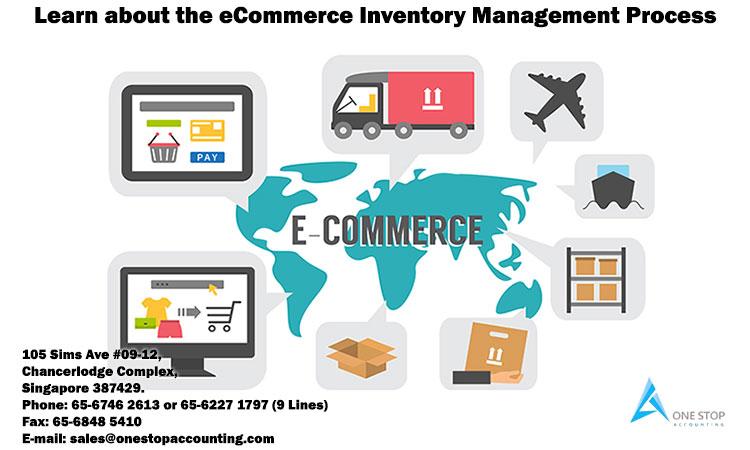
Success Stories: How these Solutions Transformed Businesses
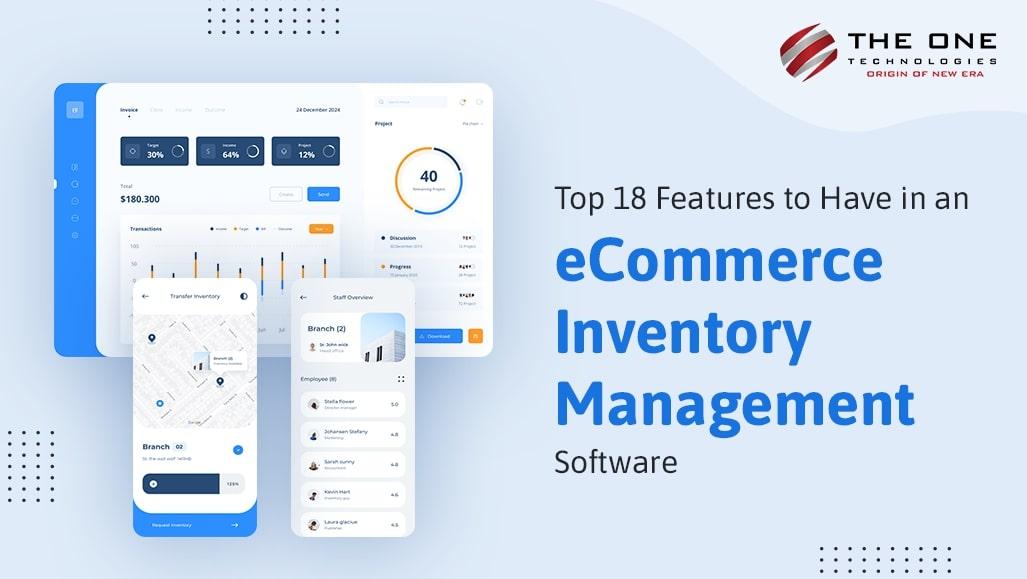
Future Trends in Ecommerce Inventory Management Software
As we look ahead, several trends are set to redefine the landscape of ecommerce inventory management software. These emerging technologies and practices will not only streamline operations but also enhance customer satisfaction and drive growth for online retailers.
Artificial Intelligence and Machine Learning are expected to play a pivotal role in inventory management. By harnessing the power of AI, businesses can predict demand more accurately, automate restocking processes, and minimize the risks of overstocking or stockouts. This not only optimizes inventory levels but also reduces costs and improves cash flow.
Another exciting trend is the integration of Blockchain Technology into inventory management systems. Blockchain provides a secure and transparent way to track products from the manufacturer to the consumer. This traceability will enhance trust among consumers and make it easier for businesses to manage returns and recalls, thus ensuring compliance and reducing liability.
Real-time Data Analytics is becoming increasingly vital for decision-making. Modern inventory management software is now equipped with advanced analytics tools that provide insights into sales patterns, seasonal trends, and customer preferences. By leveraging this data,retailers can make informed decisions about purchasing,pricing,and promotions,ultimately leading to increased sales and reduced excess inventory.
Furthermore, the rise of Omnichannel Retailing necessitates robust inventory management solutions that offer seamless integration across various sales channels. Consumers expect a unified shopping experience, whether they’re buying online, in-store, or through mobile apps. Effective inventory management software will enable businesses to synchronize stock across all platforms, ensuring that customers can find exactly what they are looking for, no matter where they shop.
Lastly, the shift toward Sustainable Practices in ecommerce is influencing inventory management strategies. More businesses are focusing on eco-friendly practices, such as reducing waste and optimizing supply chains for lower carbon footprints. Inventory management software that incorporates sustainability metrics will not only appeal to environmentally conscious consumers but also help companies meet regulatory requirements and bolster their brand reputation.
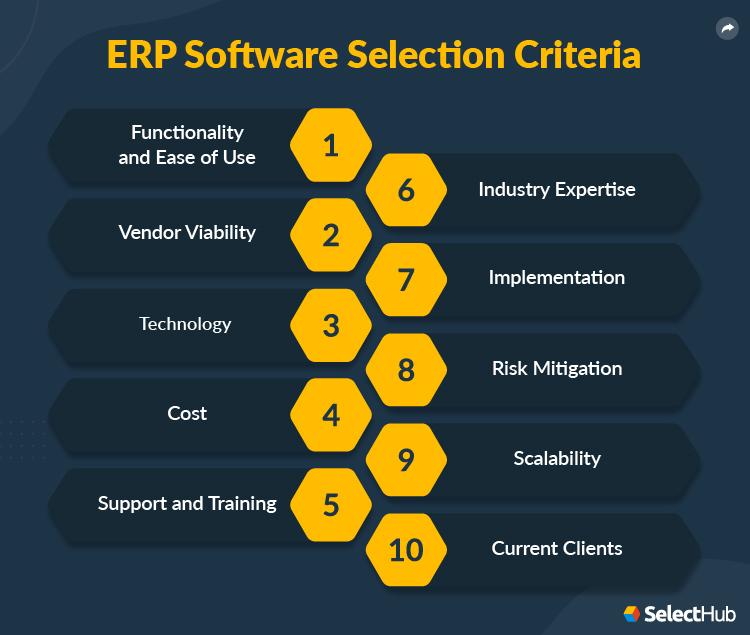
Making the Right Choice: Tips for Selecting the Best Software for Your Needs
Choosing the right software for your ecommerce inventory management is crucial for streamlining operations and enhancing productivity.With countless options available, it’s essential to evaluate your specific needs before making a decision. Here are some tips to guide you in selecting the best solution:
- Define Your Requirements: Start by identifying the features that are most vital for your business. Consider aspects like inventory tracking, order management, and integration capabilities with other tools you use.
- assess Scalability: As your business grows,your inventory management needs will evolve. Ensure the software you choose can scale alongside your operations without requiring a full system overhaul.
- User-Friendly Interface: A complex interface can hinder productivity. Look for software that offers an intuitive design, allowing your team to quickly adapt and make the most of its features.
- customer Support: Reliable customer support is essential. Check for reviews on the provider’s support services and ensure they offer assistance when you need it.
Another significant consideration is the cost of the software.It’s tempting to go for the cheapest option, but this can lead to unexpected costs down the line. Here’s a quick comparison of different pricing structures:
| Software | Pricing Model | Key Features |
|---|---|---|
| InventoryPro | Monthly subscription | Real-time tracking, Multi-channel sales |
| StockMaster | One-time Purchase | batch tracking, Analytics dashboard |
| EasyStock | Freemium | Basic tracking, Limited sales channels |
Lastly, consider the long-term impact of your choice. Investing in a robust inventory management system can enhance your efficiency and ultimately increase profitability. Don’t rush the decision—take the time to test out demos, read user reviews, and solicit feedback from your team.This way, you can feel confident that you are making a choice that aligns with both your current needs and future goals.
Frequently Asked Questions (FAQ)
Q&A: Best Ecommerce Inventory Management Software: Top Solutions
Q: What is ecommerce inventory management software, and why do I need it?
A: Great question! Ecommerce inventory management software helps you track and manage your stock levels, orders, and sales across multiple channels. If you’re selling online, keeping an eye on your inventory is crucial to avoid overselling or running out of stock. Think of it as your behind-the-scenes superhero that ensures your business runs smoothly and efficiently!
Q: how do I know which inventory management software is right for my business?
A: The best inventory management software for you will depend on your specific needs. Consider factors like the size of your business, your sales volume, and the platforms you sell on. Look for features like real-time tracking, integration capabilities with your ecommerce platform, and user-friendly interfaces.It’s all about finding a solution that fits your unique workflow!
Q: Are there any top contenders in the ecommerce inventory management software space?
A: Absolutely! Some of the top solutions include TradeGecko (now QuickBooks Commerce), Cin7, and SkuVault. each offers unique features tailored to varying business sizes and needs. for example, Cin7 provides extensive integrations with other apps, while SkuVault is known for its robust warehouse management features. It’s worth exploring their demos to see which one feels right for you!
Q: What features should I look for in these software solutions?
A: look for features that simplify your inventory processes. Key functionalities include real-time stock tracking, order management, multi-channel selling support, reporting and analytics, and easy integration with your ecommerce platform. Don’t forget about mobile accessibility—being able to manage your inventory on the go is a huge bonus!
Q: Is it expensive to invest in inventory management software?
A: While there are costs involved, many software providers offer scalable pricing plans that cater to businesses of all sizes. Think of it as an investment: the right software can save you time, reduce errors, and ultimately help boost your profits.Plus, many platforms offer free trials or demos, so you can test the waters before committing!
Q: Can inventory management software really improve my sales?
A: Absolutely! By efficiently managing your inventory, you can avoid stockouts and overstock situations. This ensures that your products are always available for customers, which enhances their shopping experience and encourages repeat business. moreover,accurate inventory data can inform your purchasing decisions,helping you optimize your stock levels and improve your bottom line.
Q: How long does it take to implement inventory management software?
A: Implementation time can vary, but many businesses find they can be up and running within a few weeks. It depends on the complexity of your existing processes and the software you choose. Most modern solutions offer user-friendly setups and guides to help you get started quickly. Plus, their customer support teams are usually very helpful during the transition!
Q: Any final tips for choosing the best ecommerce inventory management software?
A: Definitely! Take your time to do thorough research. Read reviews, ask for recommendations, and take advantage of free trials. Don’t forget to consider your future growth—choose a solution that can scale with your business. Remember, the right inventory management software can be a game-changer for your ecommerce success!
Feel empowered to take your ecommerce business to the next level with the right inventory management software! Happy selling!
Wrapping Up
As we wrap up our deep dive into the world of eCommerce inventory management software, it’s clear that choosing the right solution is pivotal for your business’s success.each option we’ve explored offers unique features tailored to different needs, whether you’re a burgeoning startup or an established enterprise.Think of your inventory management software as the backbone of your operations—efficient, reliable, and crucial for scaling your business. By investing in the right tools now, you’re not just streamlining processes; you’re setting the stage for growth, improved customer satisfaction, and ultimately, greater profitability.
Remember, the best software is the one that aligns with your specific business goals.So,take the time to assess your needs,consider future growth,and don’t hesitate to take advantage of free trials to find your perfect match.
Happy managing! Your journey towards a more organized and successful eCommerce operation starts now.

